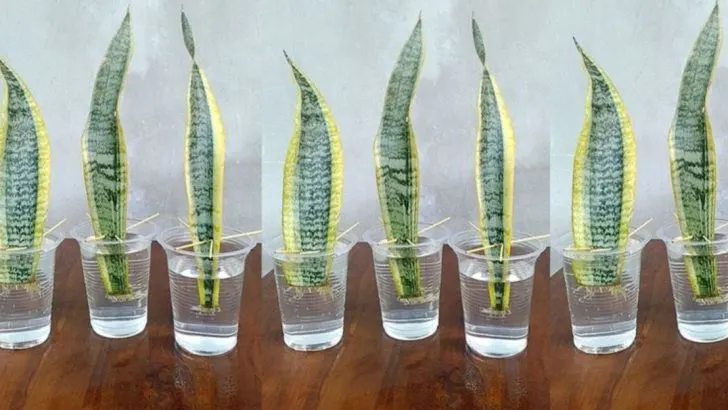Propagating plants from cuttings is one of the easiest and most rewarding ways to expand your garden. These 21 beautiful plants can be effortlessly grown from cuttings, saving you money while filling your space with lush greenery.
Rose
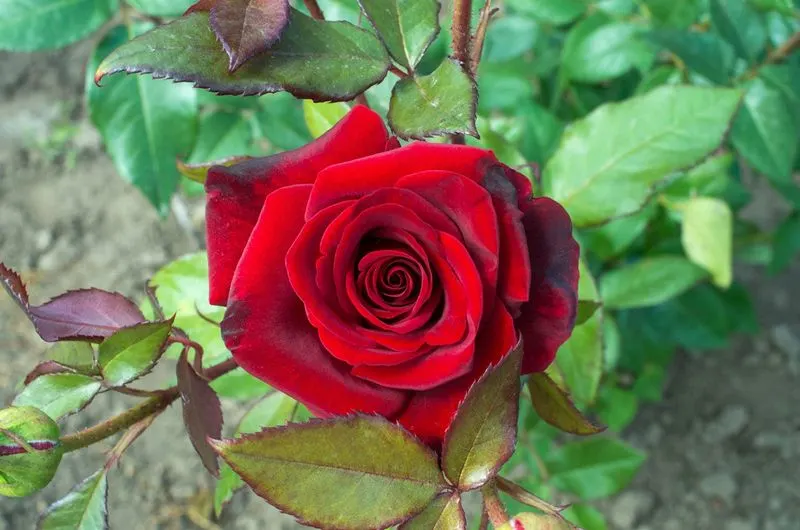
Admired for centuries, roses are renowned for their beauty and fragrance. Propagating roses from cuttings is relatively straightforward. Choose a healthy stem, preferably from a plant that has bloomed. Trim below a leaf node and remove excess leaves. Rooting hormone can enhance success rates, but it’s optional. Plant the cutting in well-draining soil, ensuring a humid environment by covering it with a plastic bag. Ensure it receives indirect sunlight. Patience is key, as it may take a few weeks for roots to develop. Enjoy the anticipation as your rose cutting transforms into a vibrant bloom.
Lavender
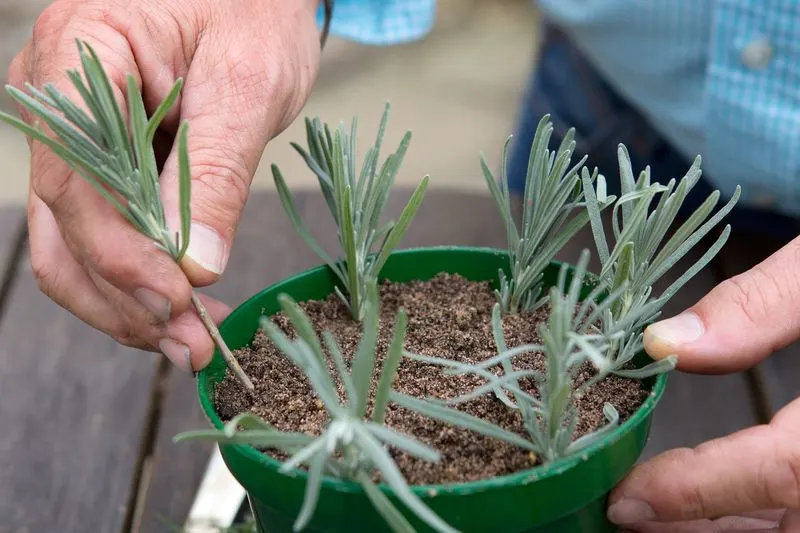
Lavender brings a touch of the Mediterranean to any home or garden with its aromatic scent and calming presence. Snip a healthy stem during spring or summer. Remove the lower leaves, and dip the cut end in rooting hormone for best results. Place in a pot with sandy soil. Lavender cuttings thrive in sunny spots, so ensure they’re placed in a bright area. Mist occasionally to maintain humidity. In a few weeks, roots should form, heralding a new lavender plant. The process is as soothing as the plant itself, bringing tranquility to your space.
Basil
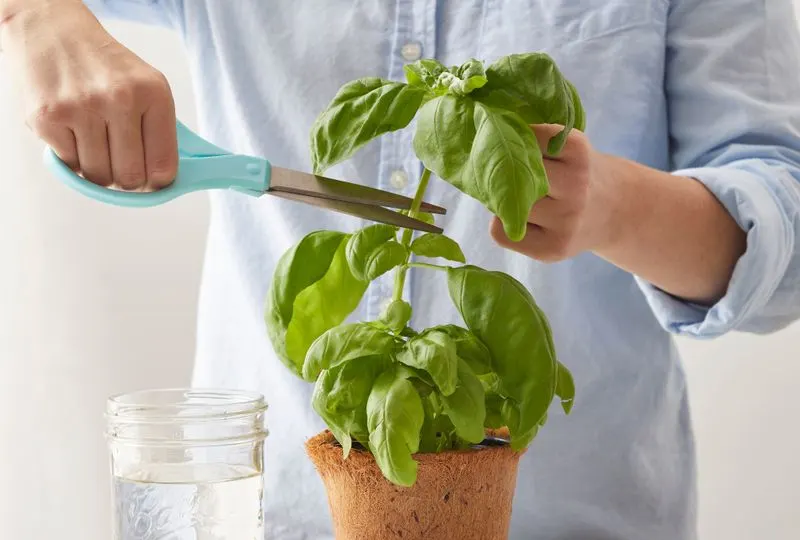
Basil is a favorite in kitchens for its vibrant flavor and ease of growth. To propagate, select a 4-inch stem from a healthy plant. Remove leaves from the bottom half and place the cutting in water. Within a week or two, roots will begin to appear. Once they’re a couple of inches long, transplant the cutting into soil. Keep the soil moist and place the plant in a sunny location. This method ensures a continuous supply of fresh basil, perfect for culinary enthusiasts. The joy of growing basil lies in its simplicity and the flavorful rewards it offers.
Ivy
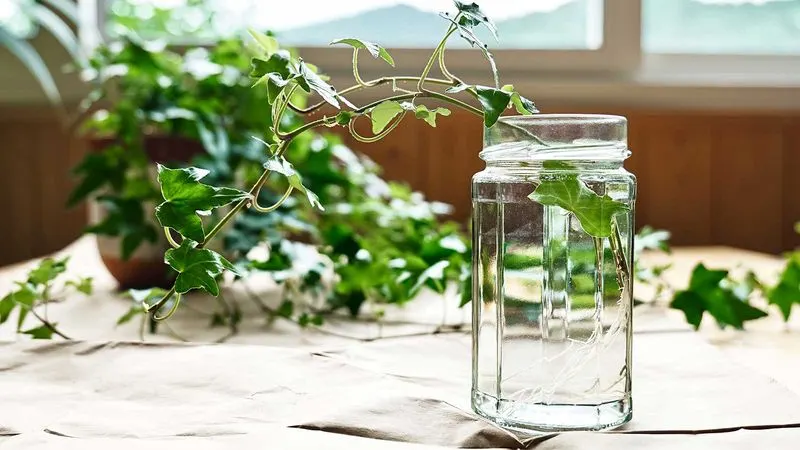
Known for its lush foliage, ivy makes an excellent indoor or outdoor plant. Cut a stem of about 4-6 inches below a node. Remove the leaves from the lower part, leaving a few at the top. Place the cutting in water or directly into potting soil. Ivy thrives in bright, indirect light, and regular misting helps. Watch as roots develop in a few weeks, ready to be transplanted to a larger pot or garden. Its cascading vines add elegance to any space and are a testament to nature’s adaptability. A simple, yet fulfilling plant to grow.
Snake Plant
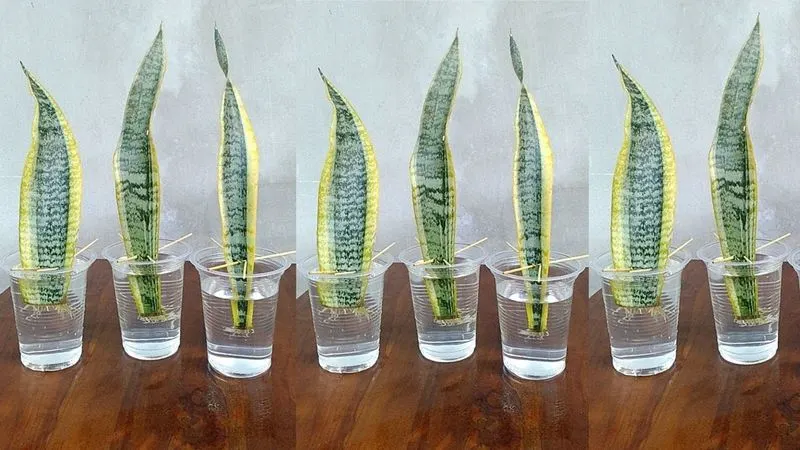
The snake plant is celebrated for its striking, upright leaves and low maintenance needs. Begin with a healthy leaf, cutting it into sections about 4-5 inches long. Allow the cut ends to dry for a couple of days to prevent rot. Plant the sections in soil, cut side down, ensuring they stand upright. Snake plants prefer indirect sunlight and infrequent watering. Over time, roots will form, and new shoots will emerge. This hardy plant not only purifies air but also adds a sleek, modern touch to interiors. Ideal for busy individuals seeking greenery without fuss.
Mint
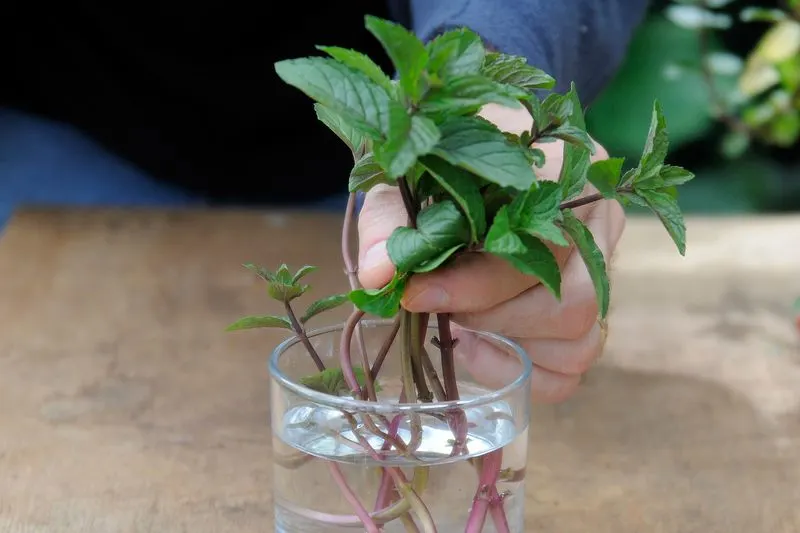
Mint is known for its refreshing aroma and flavor, making it a popular choice for propagation. Select a 3-4 inch cutting from a healthy plant, removing the lower leaves. Place it in a glass of water, ensuring the leaves aren’t submerged. Within a week, roots will start to develop. Once established, transplant the mint into a pot with rich, moist soil. Position it in a sunny location, and enjoy fresh mint leaves in your beverages or dishes. The simplicity of growing mint from cuttings makes it a favored choice for home gardeners and culinary aficionados alike.
Fuchsia
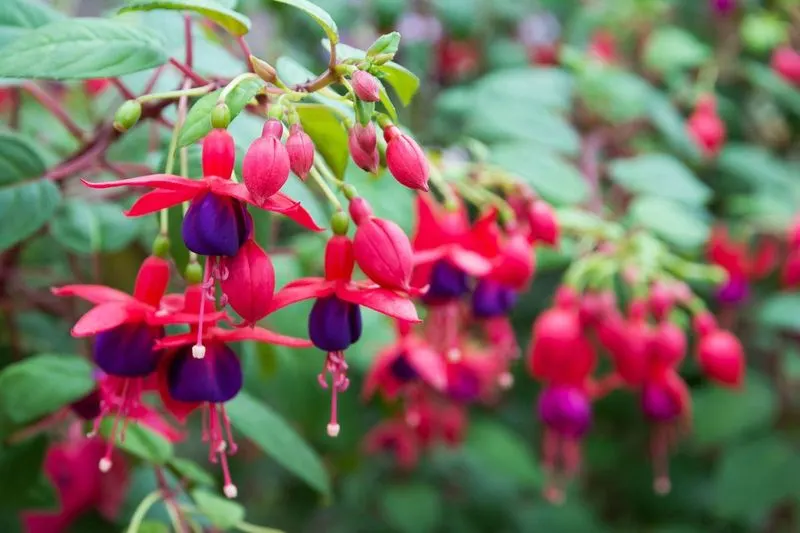
Fuchsia, with its vibrant blooms, is a striking addition to any garden. To propagate, take a cutting just below a leaf node. Remove the lower leaves and dip the cut end in rooting hormone. Plant in a pot filled with a peat-based compost. Fuchsias prefer a cool, bright location without direct sunlight. Regular misting helps maintain humidity. In a few weeks, roots will sprout, and your fuchsia will begin to flourish. Its lovely pendulous flowers attract hummingbirds and add a splash of color to your space. A rewarding plant for those who appreciate a dash of elegance.
Geranium
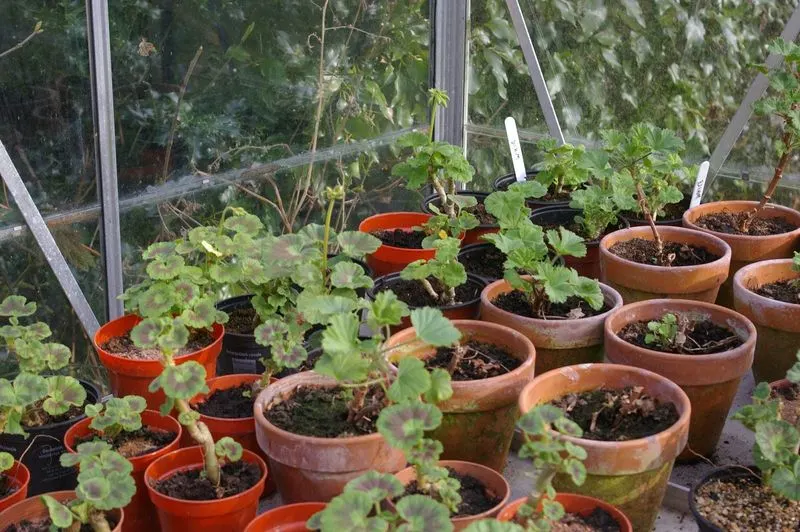
Geraniums are cherished for their cheerful blooms and ease of care. For propagation, select a healthy stem and cut just above a node. Remove any flower buds and lower leaves. Dip the cut end in rooting hormone and plant in a well-draining soil mix. Keep in a bright spot, avoiding direct sunlight. Water sparingly to avoid rot. Roots should form within a few weeks, and new growth will soon follow. Geraniums are perfect for adding color to balconies and patios. Their versatility and vibrant flowers make them a favorite among gardeners seeking both beauty and simplicity.
Hydrangea
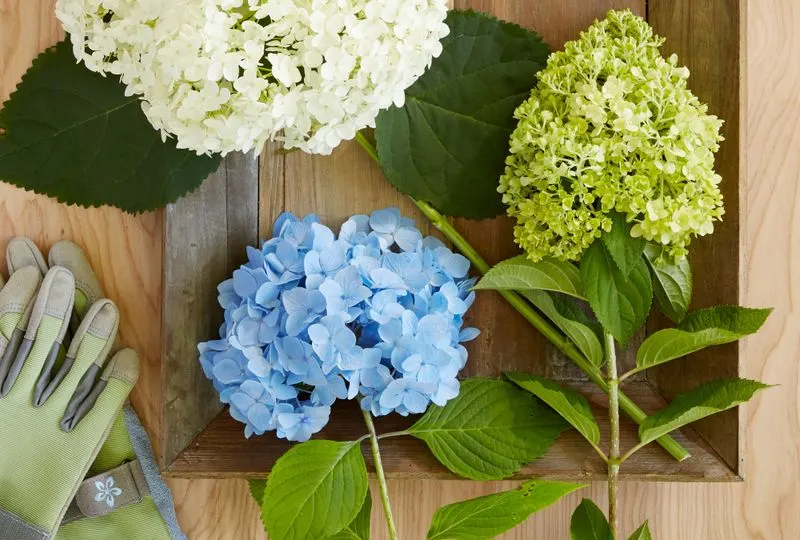
Hydrangeas are known for their large, colorful blooms and are surprisingly easy to grow from cuttings. Take a softwood cutting in early summer, just below a node. Remove the lower leaves, leaving a couple at the top. Dip in rooting hormone and plant in a pot with a peat-perlite mix. Keep the soil moist and place in a shaded area. In a few weeks, roots will develop, ready to be transplanted. The reward is a stunning hydrangea bush that enhances any garden. Their ability to change color based on soil pH adds an intriguing touch to gardening.
Pothos
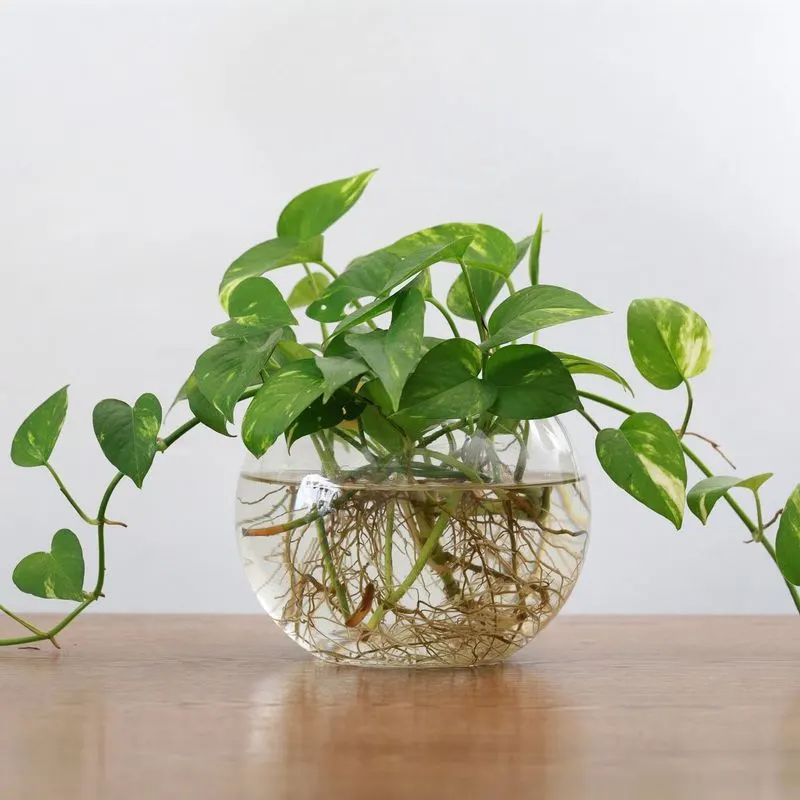
Pothos, with its heart-shaped leaves and trailing vines, is a favorite for beginners. To propagate, choose a healthy vine and cut below a node. Remove the lower leaves and place in water or directly into potting soil. Pothos adapts well to various conditions but thrives in bright, indirect light. Regular misting keeps the leaves vibrant. Roots typically appear in a few weeks, and the plant can be transferred to soil if started in water. Its forgiving nature and air-purifying qualities make pothos a popular choice for home and office spaces, offering beauty with minimal effort.
Coleus
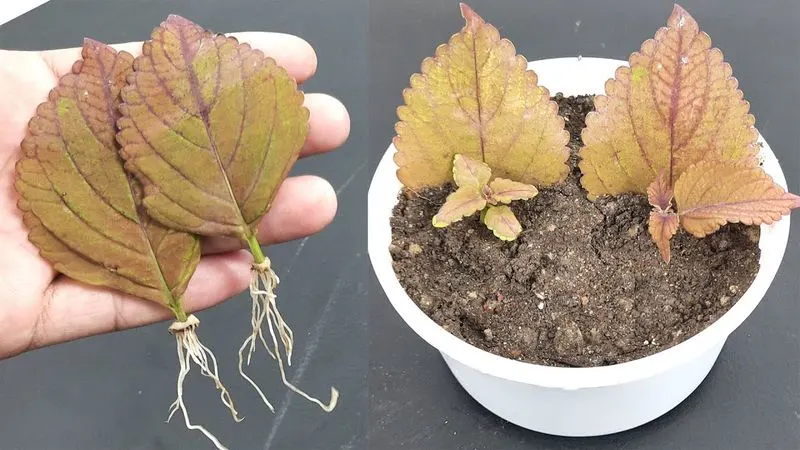
Coleus is celebrated for its striking foliage, available in numerous patterns and colors. For cuttings, select a non-flowering stem and cut below a leaf pair. Remove lower leaves and place in water or soil. Coleus thrives in bright, indirect light. Mist regularly to maintain moisture. In a couple of weeks, roots will develop, and new growth will be visible. Transplant to a larger pot or garden when ready. This plant’s bold colors make it a standout addition to any garden, perfect for those wanting a splash of color. Easy propagation ensures a continuous display of nature’s artistry.
Begonia
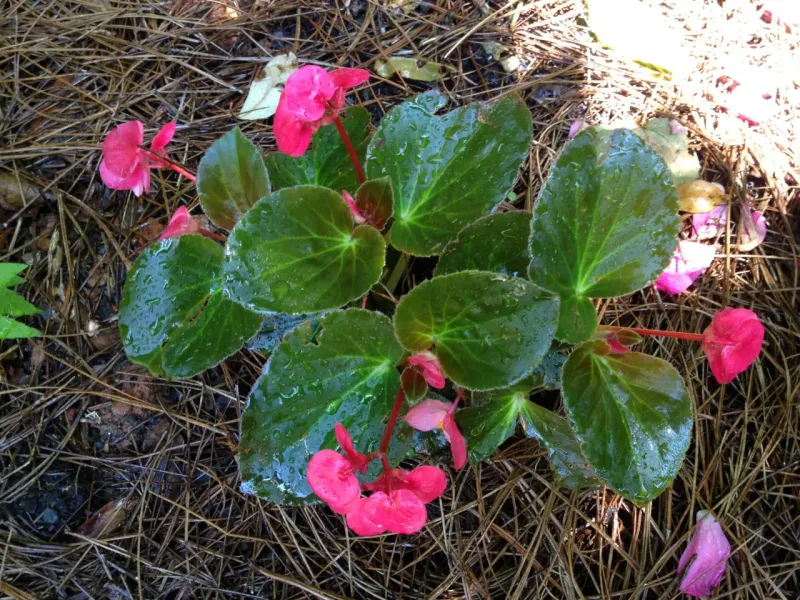
Begonias offer a diverse range of colors and leaf shapes, making them a versatile choice for indoor or outdoor spaces. To propagate, choose a healthy leaf and cut it cleanly. Place the leaf on moist soil, ensuring contact without burying it entirely. Cover with plastic to create humidity. After a few weeks, small plantlets will appear at the leaf’s base. Begonias prefer bright, indirect light and regular misting. This propagation method highlights the plant’s unique ability to reproduce from a single leaf, providing a creative way to expand your collection with minimal effort.
Jade Plant
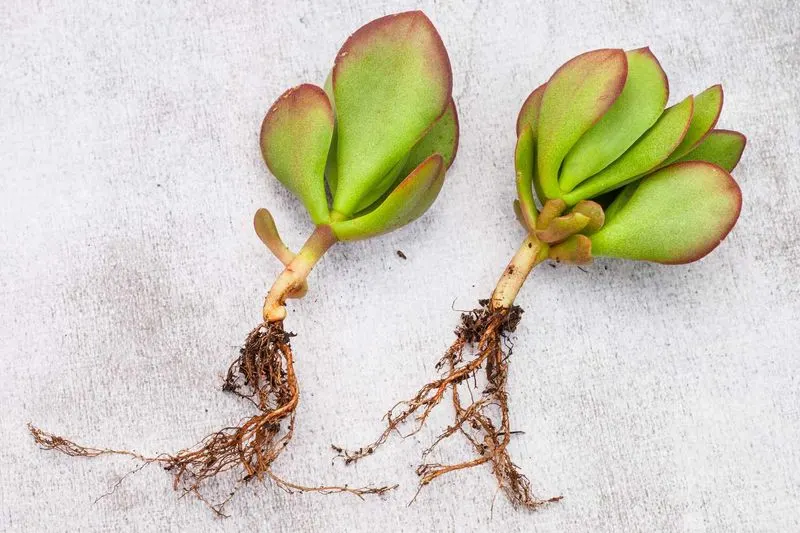
The jade plant is a succulent admired for its glossy leaves and resilience. To propagate, take a leaf or stem cutting and allow it to dry for a few days. This prevents rot. Plant in well-draining cactus soil, ensuring it stands upright. Jade plants thrive in bright, indirect sunlight and require minimal watering. As roots form, new growth will emerge, leading to a robust plant that symbolizes prosperity. Its hardy nature makes it suitable for beginners, while its elegant appearance enhances any indoor setting. A classic choice for those looking to add a touch of greenery.
African Violet
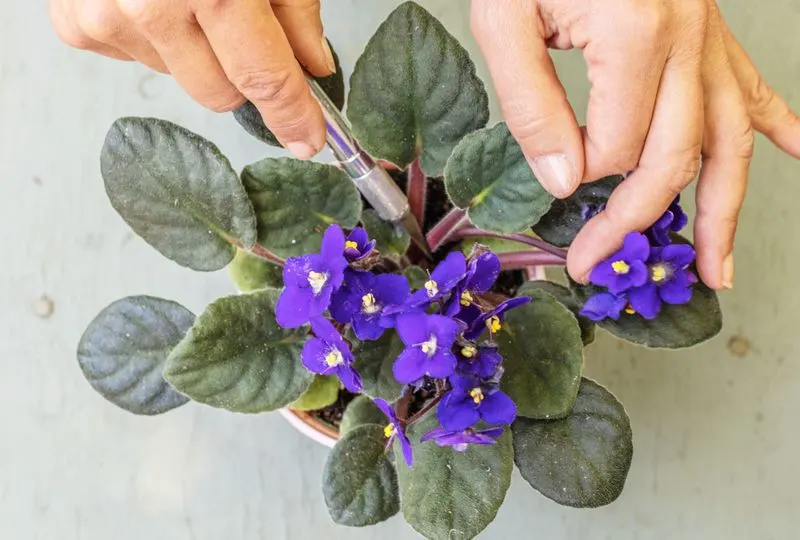
African violets, with their charming blooms, are beloved for indoor gardening. For cuttings, select a healthy leaf and cut with a bit of stem. Place in water or directly in a potting mix designed for violets. Cover with a plastic bag to maintain humidity. Keep in a warm, bright location, avoiding direct sunlight. In a few weeks, roots and new plantlets will form. The satisfaction of seeing a new violet emerge is unmatched. Their compact size and vibrant flowers make African violets a delightful addition to homes, offering year-round beauty with minimal care.
Succulents
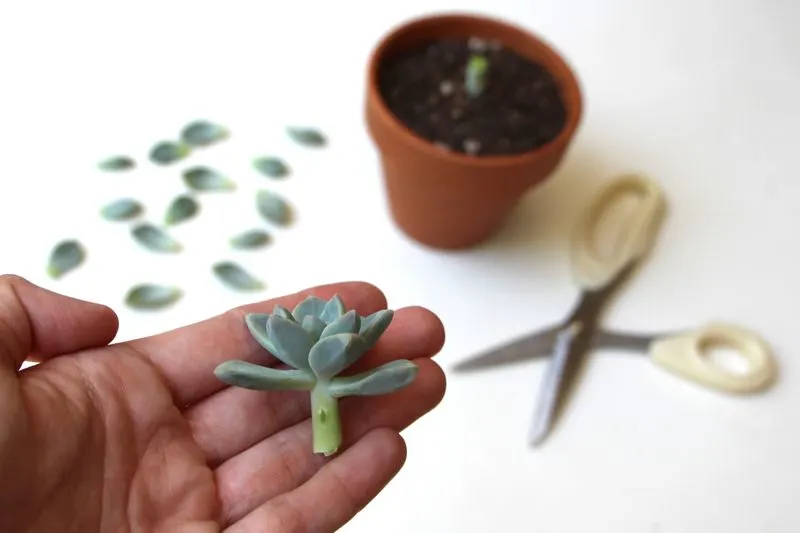
Succulents are renowned for their unique shapes and drought tolerance. To propagate, gently twist off a leaf or take a stem cutting. Allow to dry for a few days before placing on well-draining soil. Succulents prefer indirect sunlight and infrequent watering. As roots develop, they’ll anchor into the soil, creating a new plant ready to thrive. Their variety and resilience make succulents a favorite for creative arrangements and low-maintenance gardens. Each cutting offers a chance to explore the diversity of this plant family, making it a rewarding choice for plant enthusiasts.
Spider Plant
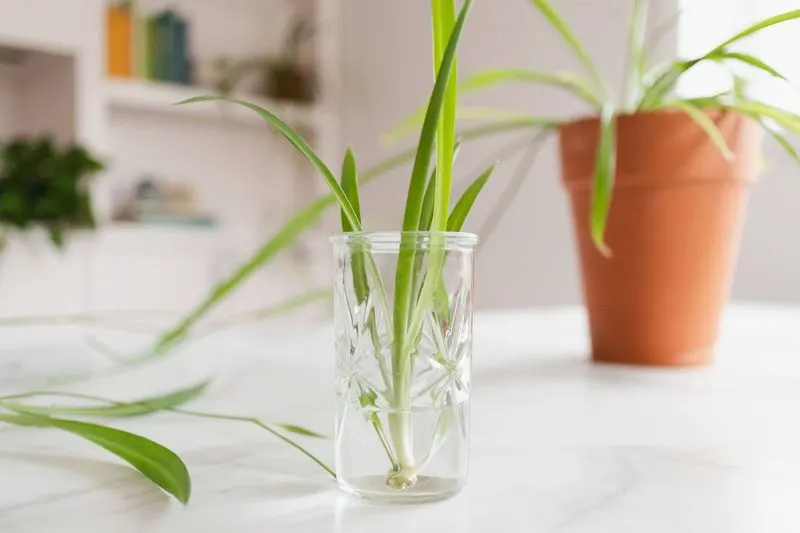
Spider plants are known for their arching leaves and tiny plantlets, known as “spiderettes.” To propagate, simply snip off a spiderette and plant it in soil. These cuttings root readily and thrive in bright, indirect light. Water moderately to keep the soil slightly moist. Within weeks, the new plant will establish itself, continuing the cycle of growth. Spider plants are perfect for hanging baskets, adding a playful touch to any room. Their ability to purify air and their easy care make them a popular choice for homes and offices, offering greenery with minimal effort.
Hibiscus
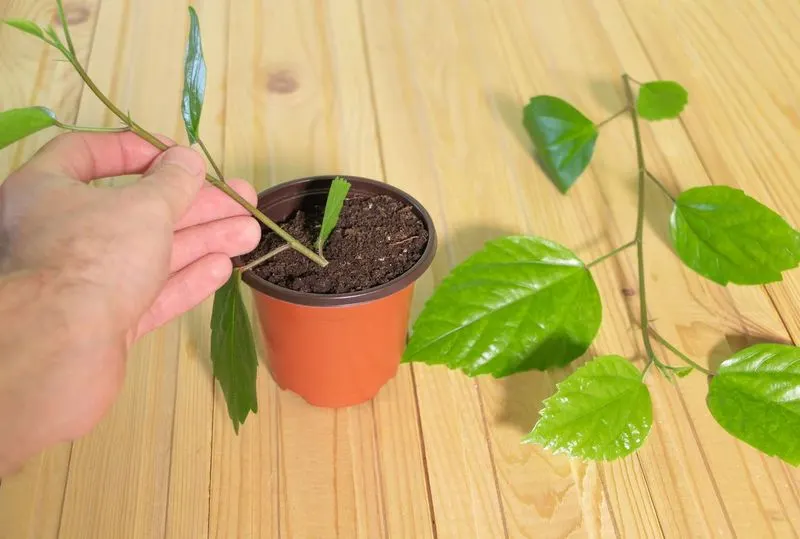
Hibiscus plants are celebrated for large, stunning blooms that attract pollinators. For propagation, take a softwood cutting and remove lower leaves. Dip in rooting hormone and plant in a well-draining mix. Hibiscus thrives in warm, sunny spots with regular watering. As roots develop, the plant will grow, rewarding caregivers with spectacular flowers. Ideal for tropical-themed gardens or as a standout feature in containers, hibiscus adds an exotic flair. Its propagation process is straightforward, offering a practical way to multiply this captivating plant and enjoy its vibrant blooms throughout the growing season.
Camellia
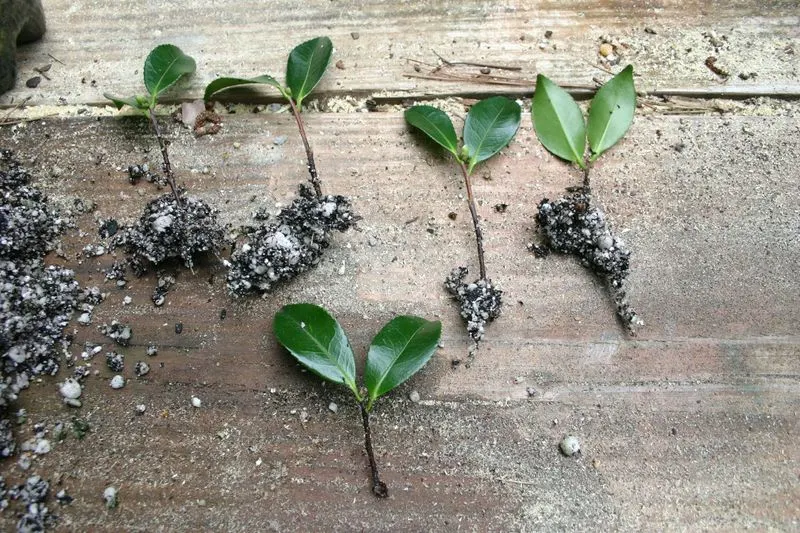
Camellias are treasured for their elegant flowers and glossy foliage. To propagate, take a semi-hardwood cutting and remove the lower leaves. Dip in rooting hormone and plant in a well-draining mix. Camellias prefer acidic soil and dappled sunlight. Keep the soil moist but not waterlogged. In several weeks, roots will form, leading to new growth. Camellias are perfect for adding an elegant touch to gardens and patios, with blooms that appear in cooler months. Their timeless beauty and relatively simple propagation process make them an excellent choice for both novice and experienced gardeners.
Rosemary
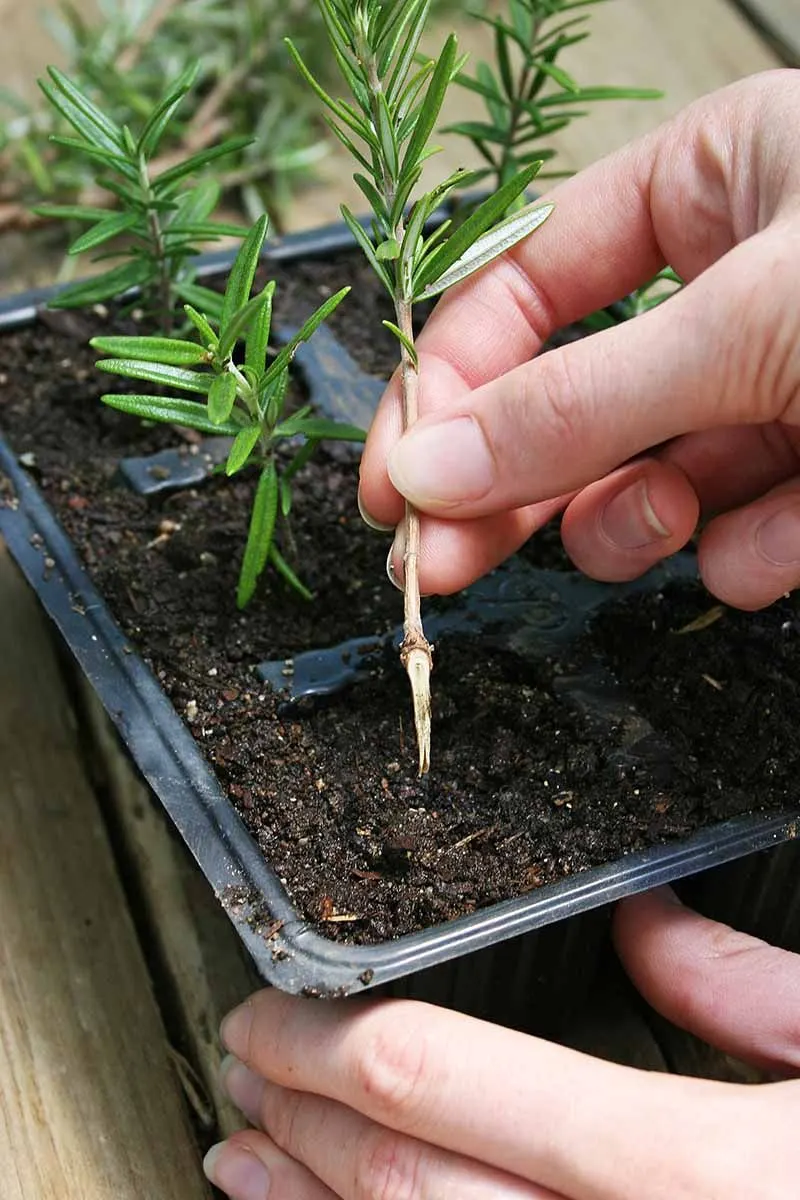
Rosemary, with its aromatic leaves, is a culinary staple and a garden favorite. To propagate, cut a healthy sprig and remove the lower leaves. Place in water or directly into potting soil with good drainage. Rosemary thrives in sunny spots and requires minimal watering once established. In a few weeks, roots will develop, leading to a robust plant ready to flavor dishes. Its versatility extends beyond the kitchen, offering ornamental value with its needle-like foliage. Propagating rosemary provides a readily available herb supply, enhancing both indoor and outdoor spaces with its fragrant presence.
Philodendron
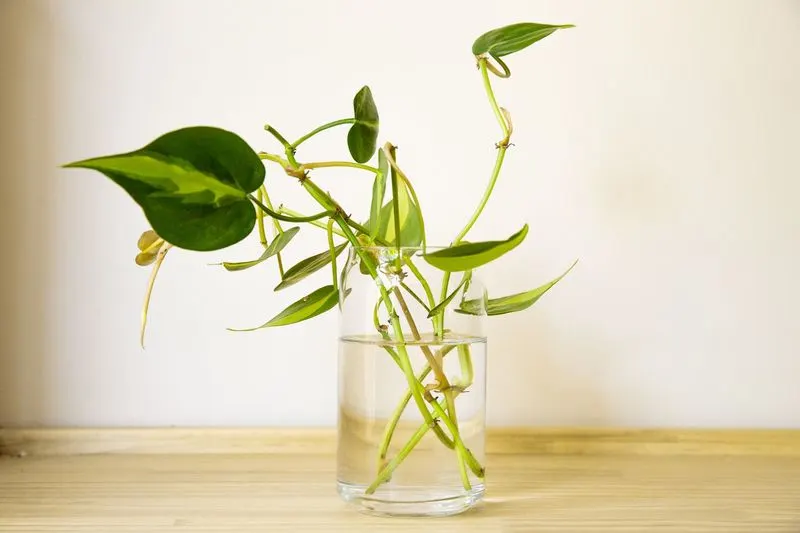
Philodendrons are adored for their lush, green leaves and adaptability. Take a cutting from a healthy vine, ensuring at least one node. Remove the lower leaves and place in water or directly into soil. These cuttings thrive in bright, indirect light and appreciate occasional misting. As roots form, new growth follows, making philodendrons an excellent choice for indoor jungles. Their trailing vines add a touch of nature to any room, requiring little maintenance. Perfect for busy individuals looking to introduce greenery into their living spaces, philodendrons combine ease with aesthetic appeal.
ZZ Plant
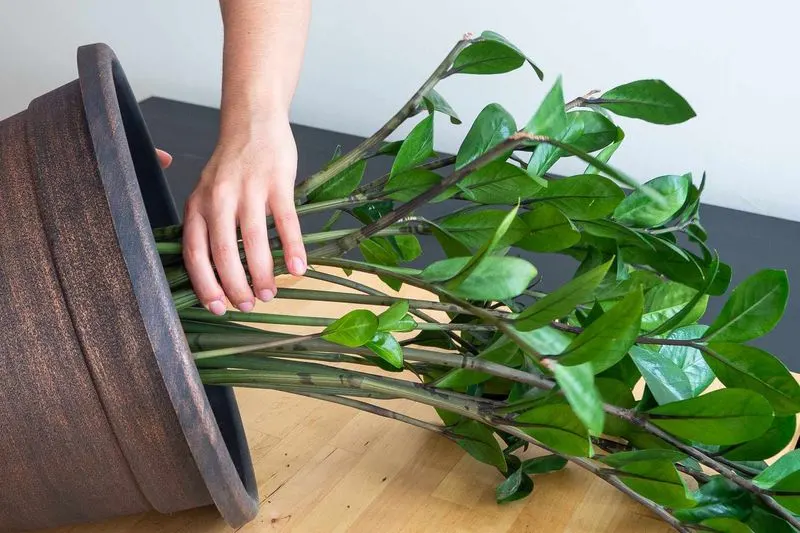
The ZZ plant is prized for its glossy leaves and low maintenance needs. To propagate, cut a healthy leaf or stem and allow it to dry for a few hours. Plant in well-draining soil, ensuring the cutting isn’t buried too deep. ZZ plants thrive in low to bright indirect light and require infrequent watering. Roots will develop slowly, rewarding patience with new shoots. Their resilience makes ZZ plants perfect for offices and homes, where they provide greenery with minimal care. A testament to nature’s ability to thrive under less-than-ideal conditions, ZZ plants are both practical and attractive.

